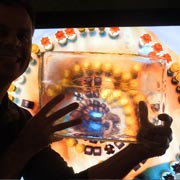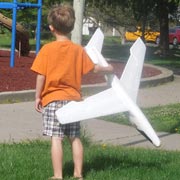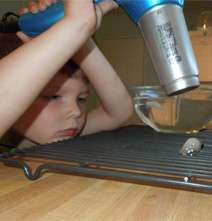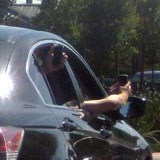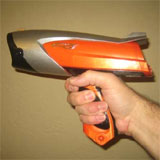Trying to Make Clear Ice - page 3
Plastic bags are much thinner than the other containers I was trying, which should have allowed me to control the formation of ice inside. I also had a theory that this would prevent frigid air from dissolving back into the liquid.
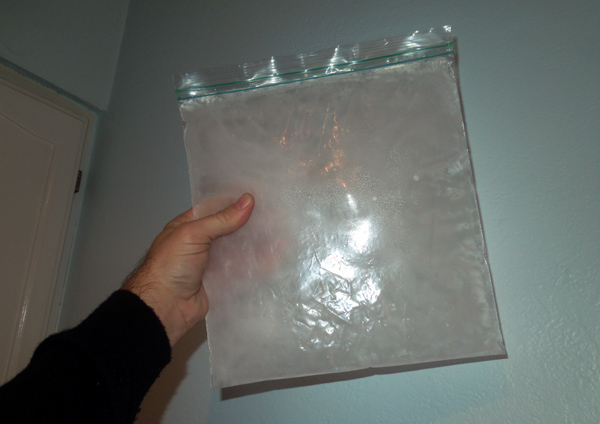
Unfortunately, the plastic film provided a surface for air bubbles to sit on. The resultant ice was cloudy throughout, with a uniform film of bubbles.
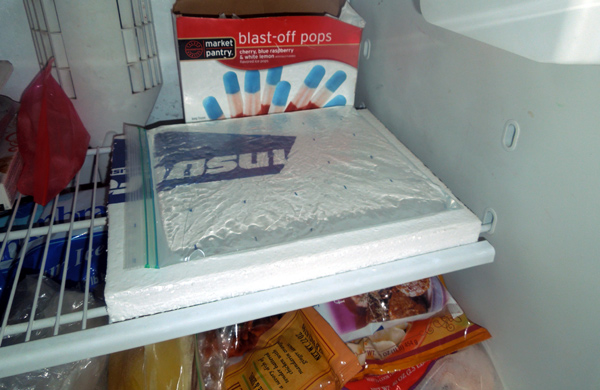
On my next attempt, I tried resting the ziplock bag on a thick sheet of styrofoam. This would cause the top to freeze first.

The results were pretty much the same. Bubbles-a-plenty.
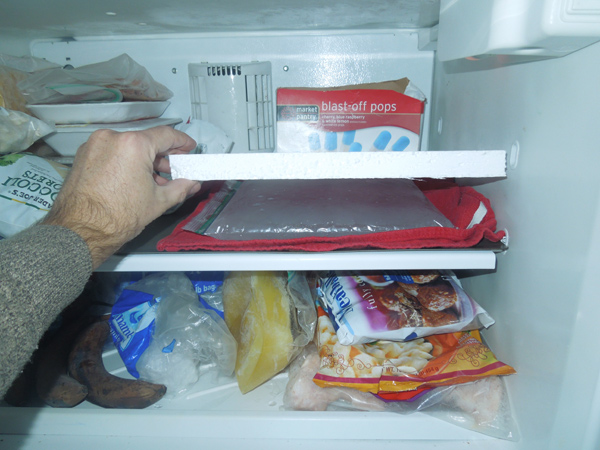
One more idea was to try to knock off the surface bubbles with a soft towel underneath, and a sheet of styrofoam on top.
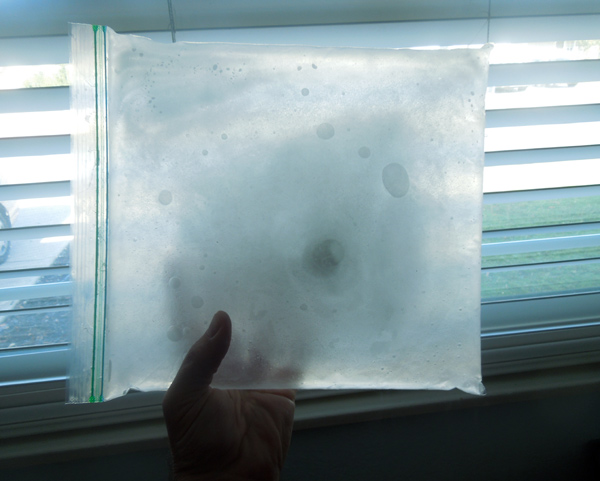
That didn't work either.
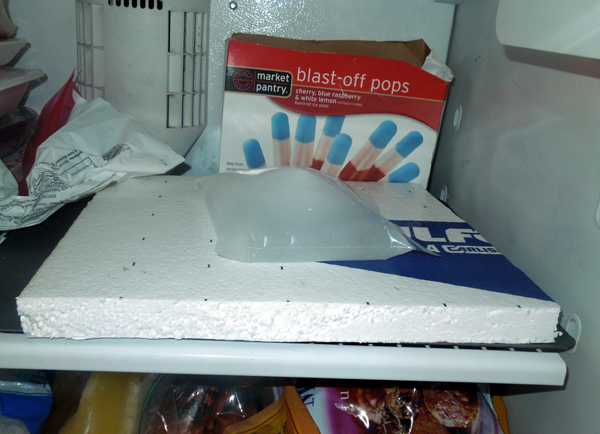
My final attempt with a ziploc bag summarized the "expanding ice" problem.
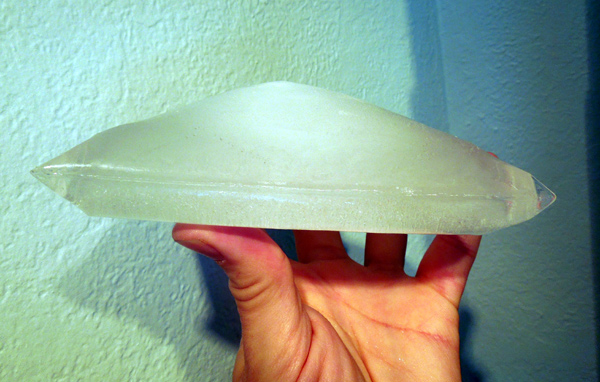
The center was the last part to freeze, illustrating how the ice will naturally expand to take a shape larger than the liquid water. If this ice block had been contained within a hard plastic cup, the expanding ice would have cracked out of the surrounding ice.
The plastic bag didn't work out for making clear ice, but it did help to illustrate the limitations of thin plastic containers.

I had one more idea for the flashlight method: a huge lantern flashlight warming up a smaller container of water.

That didn't work. The first ice to freeze was very clear around the edge of the container, but again, the center ice held the opaque gas and cracked the surface as it expanded.
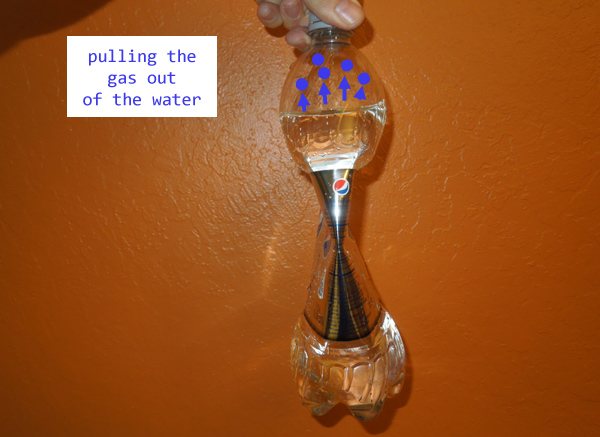
My next tactic, I think this was the 13th try, was to pull some of the dissolved gasses out of the water before I froze it.
I filled an old Pepsi bottle with distilled water, pinched the center and re-capped the bottle. The shape of the bottle was now pulling the water, keeping it in low pressure.
Note that this is the opposite of the usual purpose of a two-liter soda bottle. Usually the bottle is under high pressure, bulging with carbonated gas, the cap keeping the pressurized gas in solution. In the pinched-bottle arrangement, the bottle is pulling at the liquid, drawing out the gas, trying to get back to it's natural cylindrical shape. I left the water in this vacuum for one day, then put it into the freezer.
Please Read Page 4 of Making Clear Ice >
Cockeyed home page | Contact | Terms and Conditions | Updated January 27, 2014 Copyright 2014 Cockeyed.com






